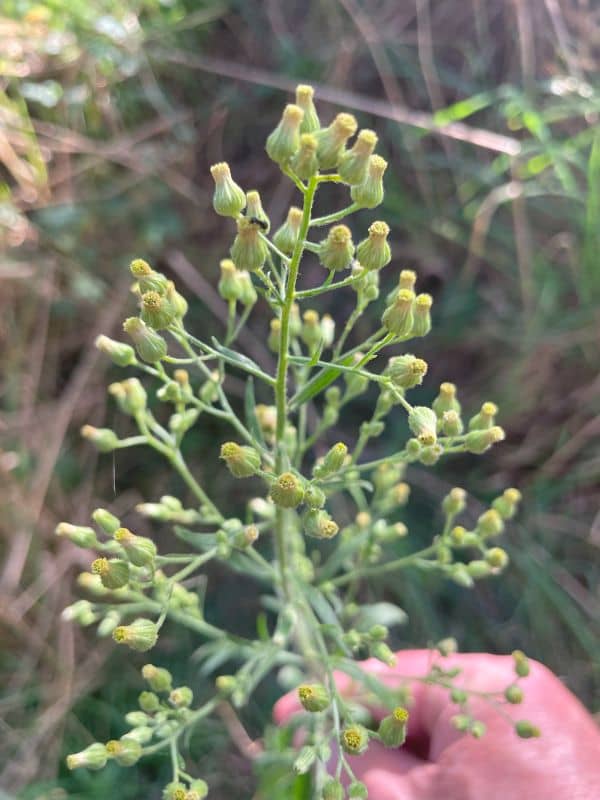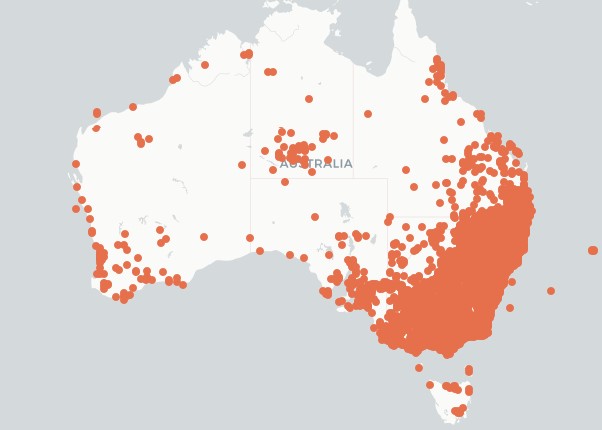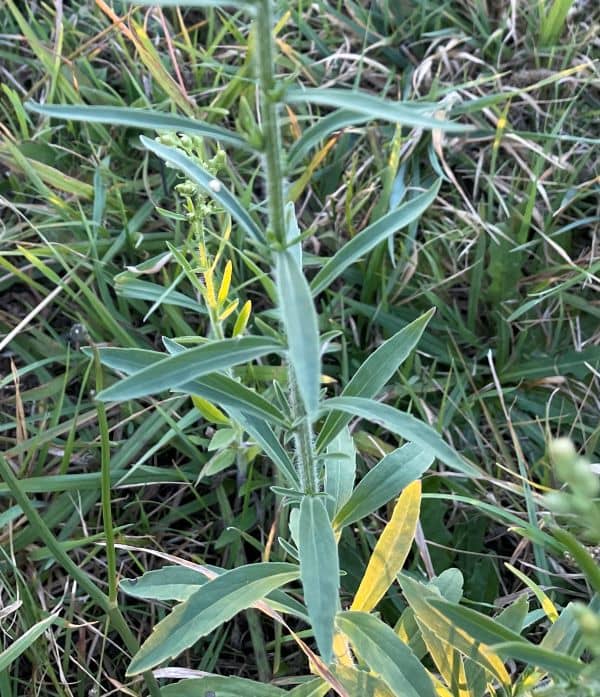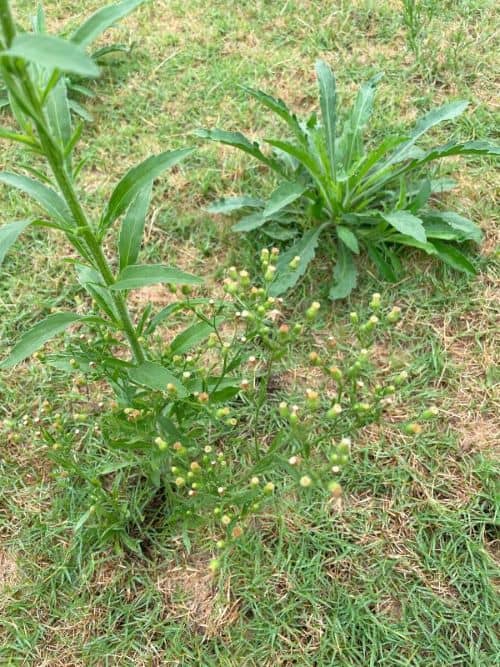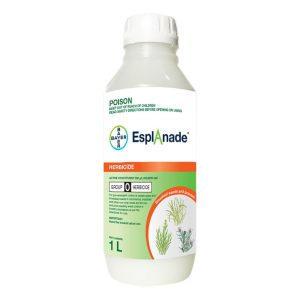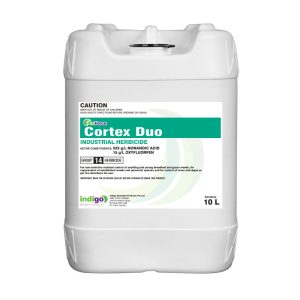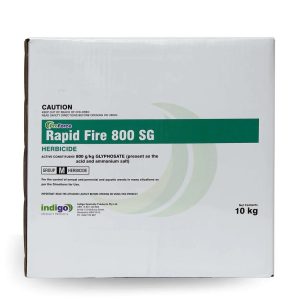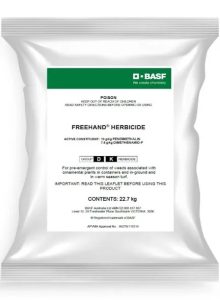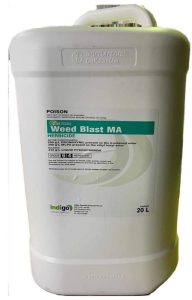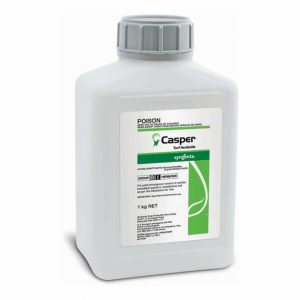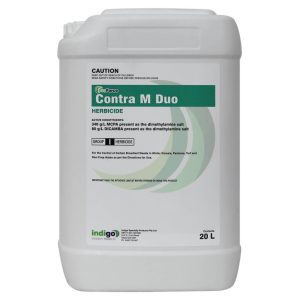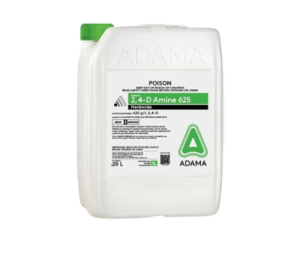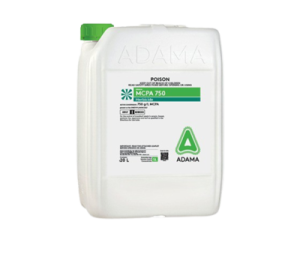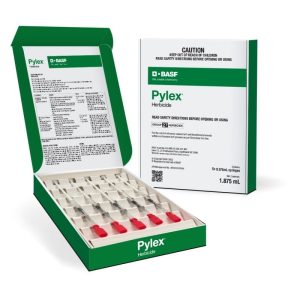Fleabane (Conyza spp.)
Fleabane weed is also known as Horseweed. It is a tall dicot with a tough, hairy stem and leaves. As it matures its stem becomes hard and woody.
It is a Summer annual or biennial weed that germinates in the Spring. It then becomes a problem over the Summer months. Although it is a Summer annual, you can sometimes see it in the Winter.
After you read this, you will be able to:
- Identify Fleabane weed or Horseweed.
- Know its habitat.
- Know how to control this weed.
In Australia there are three main species of Fleabane weed:
- Flaxleaf Fleabane (Conyza bonariensis). This is the most common.
- The annual Tall Fleabane (C. sumatrensis).
- Horseweed or Canadian Fleabane (C. canadensis) which is also an annual.
Thanks to The Atlas of Living Australia for the distribution map of Horseweed.
Why is Fleabane a Major Weed?
- Fleabane weed produces a lot of seeds.
- A lot of these are viable.
- It is very competitive.
- Horseweed is hard to control with herbicides.
- It can tend to develop herbicide resistance.
- Where there is little competition, it quickly invades.
- Dense stands smother native plants.
- Over the Winter it builds a strong root system. In the Spring it then quickly grows when the temperatures warm up.
- Plants that over-winter are very difficult to control.
Growth of Fleabane.
- It has alternate dark green leaves with teeth along its edges.
- The leaves have a cover of fine hairs. These hairs plus its woody stem, make it difficult to control.
- In the mid Winter there is only limited emergence of this weed. However, young Autumn or early Winter seedlings can grow over the Winter even in cold or dry conditions.
- While you can’t see above ground growth, strong root growth does continue over this period.
- The tap roots of Fleabane weed are able to grow more than 35 cm down into the soil. This allows plants to survive severe drought conditions.
- The other advantage of growing a strong root system over the Winter, is that the plant is able to build up food reserves. This means that in the Spring it is ready to start to grow straight away.
- In close cut turf or when it is young, this weed looks like a flat, rosette.
- However, as it matures, the stem lengthens and the leaves wrap around the stem.
- In the Spring and Autumn, you can see large flower clumps at the top of the tall stem. These form fluffy clusters as its seeds form.
- You can often confuse young plants with Winter annuals like Common Chickweed and Shepherd’s-Purse.
- In its vegetative stages it is often confused with Capeweed.
How to Identify Fleabane.
Photosynthetic Pathway: It is a C3 Weed. It grows best between 15°C and 30°C. Above 30°C growth declines. This is due to a lack of CO2 to sustain any further growth.
Flower: The flowers are white to yellow. The flower head has a cylinder to bell shape, and is 5 to 6 mm long.
Height: It is 1 to 2 m tall.
Leaf length: The leaves are 2 to 10 cm long
Leaf width: The leaves are 1.5 cm wide, and have a cover of soft hairs.
Reproduction of Fleabane Weed.
- This weed only reproduces by seed, and wind spreads the small, light seeds.
- Mature plants produce around 110,000 seeds. These are viable for up to 18 months.
- Its seeds only emerge when they are on or near the soil surface. No seeds emerge below a soil depth of 2 cm.
- When the seeds are on the surface, only 5% remain viable after a year.
- Even if the seeds are buried at 50 mm and 100 mm for a year, 10% and 15% of the seeds are still viable.
- The ideal temperature for this weed to germinate is 20°C. It has a base temperature of 4.2°C and a maximum germination temperature of 35°C.
- 50% of the seed emerges in 4 to 5 days after moisture is supplied at 20°C.
Comments: The leaves of fleabane weed are grey to green. They have an oblong, oval or wedge shape, and are twisted near their base. It can cope with drought and frost, but does not compete well in shade.
Habitat: You find this weed in farm land, orchards, vineyards, roadsides, and industrial sites. It thrives if there are bare areas of soil where it can germinate.
It is a common weed in light soils but you also can find it in heavy soils.
More on lawn and turf grass weeds is in our weed ID chart.
Fleabane Control.
Weed Management Calendar for Fleabane.
Management Calendar for Fleabane | ||||||||||||
Summer annual | ||||||||||||
Jan | Feb | Mar | Apr | May | Jun | Jul | Aug | Sep | Oct | Nov | Dec | |
Germination | ||||||||||||
Active Growth | ||||||||||||
Flowering | ||||||||||||
Dormant or Semi dormant | ||||||||||||
Pre Emergent Herbicide | ||||||||||||
Post Emergent | ||||||||||||
Prevention of Fleabane:
An integrated approach gives the best chance to manage Horseweed. The seeds do not seem to survive more than 18 months, so the aim is to carry out control before it forms new seeds.
- Monitor areas. This means that you can see when Horseweed first germinates.
- Spray weeds when they are at the small rosette stage. This is before any stem elongation starts.
- Use an adjuvant to improve chemical uptake.
- When plants are under water stress they are more difficult to control with chemicals.
- Rotate mode of action groups.
- Control plants in nearby areas so they don’t flower. This stops them acting as a seed source.
- You must manage the seed bank to get long-term control of this weed.
Cultural Control of Fleabane.
This weed is a poor competitor and does not like shade. A healthy, dense turf cover will choke out this weed. The key is to improve the competitiveness of your turfgrass.
- Feed you turf, mow at the right height for the turf species present, and deal with any soil compaction.
- Mowing to control this weed is not effective. In fact it tends to encourage it. When you mow it causes plants to laterally branch from their base, and hardens them off.
- When you mow it also reduces the leaf area for herbicide coverage. This makes post-emergents ineffective.
- If the soil is not compact you can hand remove this weed. This is best done before the stem begins to elongate.
- On heavy, and compact soils you will need to use a fork to prevent the plant breaking. This will stop any re-growth from the base.
Biological Control of Fleabane.
- There is no effective biological control in Australia for this weed. Work is ongoing to look at potential agents. One of these is a rust fungus (Puccinia cnici-oleracei) that only infects Flaxleaf Fleabane.
- When this pathogen infects plants they produce 50 to 60% less flower heads and, so less seed.
- There is also ongoing work into three insects. A stem-boring weevil, a leaf-gall midge, and a tephritid fly that forms stem galls.
Chemical Control of Fleabane:
- Some Horseweed plants have been seen to have resistance to Glyphosate. Mature plants seem to have a tolerance to high levels of this due to their leaf structure.
- A successful control program depends on when you treat it, the use of the right herbicide mix, and the use of multiple applications.
- The main thing to do is make sure that you spray when the plants are small, actively growing and are not under any stress.
- When young Horseweed plants are at the rosette stage, and less than 10 cm across they are easy to control.
- If you spray very young plants (up to the two leaf stage) there is only a small leaf area for chemical uptake. This can mean that your spray does not work.
- Small plants are easy to kill. The use of a phenoxy herbicide in the late Spring tends to kill them.
- Due the hairs on Horseweed, use a surfactant (ProForce Scrubwet) at 200 mL/100 L with these chemicals.
- Make sure that you don’t use too high a water rate. If the water rates are too high, then the adjuvant will become too dilute to work.
- It is difficult and expensive to kill mature plants. This is especially the case if you try to treat them in the mid to late Summer.
- Factors such as weed age will have a negative impact on the results that you get.
Pre-Emergent Control of Fleabane.
The results from pre-emergents depends on their timing, and the amount of rainfall or irrigation you apply.
- The only Pre-emergent that currently has a registration for turf is BASF Freehand.
- Esplanade has a label for Horseweed in NZ.
Post-Emergent Control of Fleabane.
- You must use post emergents when this weed is at the rosette stage and up to 5 cm across. This is because as the weed matures, chemicals are less effective.
- A spray adjuvant helps with the results. It improves a chemicals, and the overall performance of a herbicide.
You get the best results on this when you:
- Only use herbicides on weeds that are actively growing.
- Allow enough time between when you spray and when you mow. This gives the chemical time to work.
- Do not spray Fleabane weed when it is under stress due to drought or cold weather.
Post emergents include:
- 2,4-D Amine. Use this when weeds are young and growing. You may need to treat several times.
- Dicamba. Use this on growing Fleabane weeds. Small plants are easier to control, and you will need to use high rates for large plants. Do not use Dicamba when the outside temperatures exceed 26°C. Do not use Dicamba on Buffalo grass.
- Contra M. Do not use on Buffalo grass.
- Casper Turf Herbicide. To get the best results from Casper, use a non ionic surfactant at 0.25 to 0.5 v/v. We suggest OptiSpread 1000. Do not use this on Buffalo grass.
- Recondo Herbicide. Do not use on Buffalo grass.
- Pylex. Do not use on Buffalo grass.
- Weed Blast MA. You can use this on Buffalo grass.
- Warhead Trio. You can use this on Buffalo grass.
Table of post Emergent Fleabane Herbicides.
Product | Active | Chemical Group | Rate/Ha | Comments | ||||
2,4-D | 2,4-D | 4 | 1.8-3.2 L | Wet foliage. DO NOT mow the lawn for 1 week before and at least 1 weed after use. Do not use on Buffalo grass (WA only). | ||||
Casper | Prosulfuron + Dicamba | 2 + 4 | 800 g to 1 Kg | Apply from the Autumn to the Spring. Use high rates in cool months or if there is high weed pressure. Control takes 4 to 6 weeks. Use an NIS at a rate of 0.25 to 0.5% v/v. | ||||
Contra M. | Dicamba + MCPA | 4 | 6.5 L | Use in 250 to 400 L of water. Do not use on Buffalo grass. After use do not mow for 2 days before or afterwards or fertilise within two weeks. | ||||
Dicamba | Dicamba | 4 | 1.2 L + 3.2 L of 2,4-D Amine 625 g/L | Use a minimum of 1000 L/Ha of water. Do not spray on Buffalo or Bent Grass. | ||||
Recondo | Trifloxysulfuron | 2 | 225 g | Use an NIS at 0.25% v/v (1000 g ai/L), 0.42% v/v (600 g ai/L) or Overtake Oil at 1% v/v. Ensure good cover of the leaves & into the crowns. The water volume is 400 to 800 L/ha. You may need apply again in 4 to 6 weeks. Allow at least 6 weeks before you overseed. You may see discolouration on Qld Blue and Zoysia. | ||||
Pylex | Topramezone | 2 | 110 g | Apply to growing weeds and not to weeds under stress. | ||||
Weed Blast MA | Bromoxynil + MCPA | 27 | 0.375 mL/ 100 m2 in 4-6 L water + 0.5% MSO | Apply twice 21-28 days apart. You may see bleaching of Bentgrass after 7 to 14 days. Do not water for 24 hrs after use. | ||||
Warhead | MCPA + Clopyralid + Diflufenican | 4 + 12 | 5 L | You may see discolouration on kikuyu, carpet grass and Queensland blue. Do not overlap. Use an NIS. | ||||
Non Selective Control of Fleabane.
You cannot use any of these on lawns or turf areas to selectively remove this weed.
- Glufosinate-ammonium controls Horseweed for 4 to 6 weeks. However, it will tend to grow back as this only burns off the top of the plant.
- Glyphosate. You can use Glyphosate. If water quality is an issue then add ProForce Manta Ray to your spray tank.
The folllowing are non-selective. They also have a long term residual and stop any weed re-growth.
- Renegade. Renegade stops weed germination for up to 12 months. This reduces the need to make further applications.
- Numchuk Quad. This gives post and pre emergent control for up to 12 months.
- Cortex Duo. Cortex Duo gives a quick knockdown of this weed. It also has a 3 month residual to stop any re-growth. It is also safe to use near trees.
Non Selectives.
Product | Active | Chemical Group | Rate/Ha |
Glufosinate 200 | Glufosinate-ammonium | 10 | 1 to 6 L |
Rapid Fire 800 | Glyphosate | 9 | 0.9 to 1.35 Kg |
Numchuk Quad | Terbuthylazine + Glyphosate + Amitrole + Oxyfluorfen | 5 + 9 + 34 + 14 | 20 to 25 L |
Cortex Duo | Nonanoic Acid + Oxyfluorfen | 14 | 7 L/1000 L |
Renegade | Bromacil | 5 | 3.5 to 6.5 Kg |


